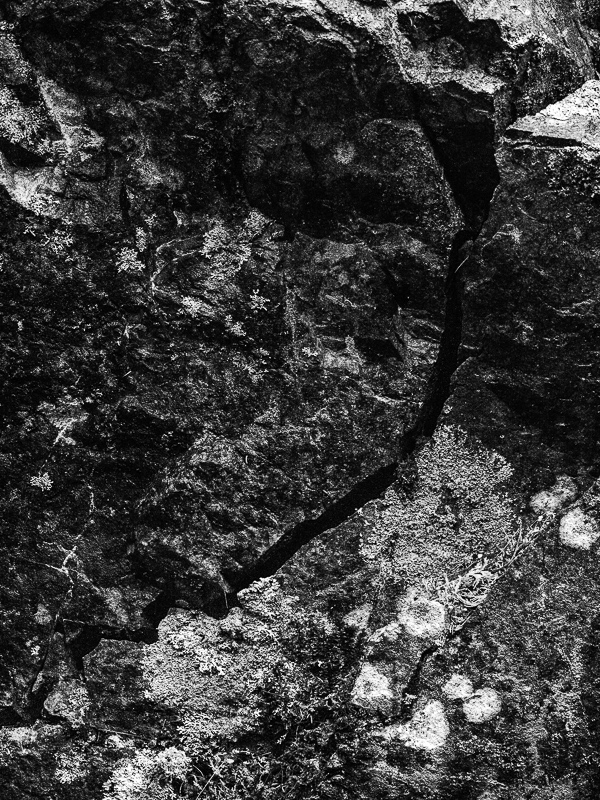Every Picture Is a Compromise
Lessons from the Also-rans
Most photography websites show the photographer's very best work. Wonderful. But that's not the full story of a creative life. If we want to learn, we'd better pay attention to the images that aren't "greatest hits" and see what lessons they have to offer. Every picture is a compromise — the sum of its parts, optical, technical, visual, emotional, and even cosmic – well, maybe not cosmic, but sometimes spiritual. Success on all fronts is rare. It's ok to learn from those that are not our best.
This is a series about my also-rans, some of which I've been able to improve at bit (i.e., "best effort"), none of which I would consider my best. With each there are lessons worth sharing, so I will.
Original digital captureWhat I saw that I liked:I've never met a rock wall I didn't want to photograph. What I don't like in the picture:The problem with photographs of rocks is that they are thoroughly inanimate objects. They don't even have the patterns we find in botanicals or water. Rock just sit there, motionless. What I learned:The trick is to find movement in the composition. I find this almost always brings me to the cracks in the rock, often on that creates a diagonal like the example at left. At least with a line like that, our eye wants to move and scan the surface of the rock. 2nd Chances: What I might try nextGetting the whites in lichen is subtle. Too light and the lichen loses detail. Too dark and it looks gray and lifeless. I'll need to print this one to be sure I have those whites exactly right. |


